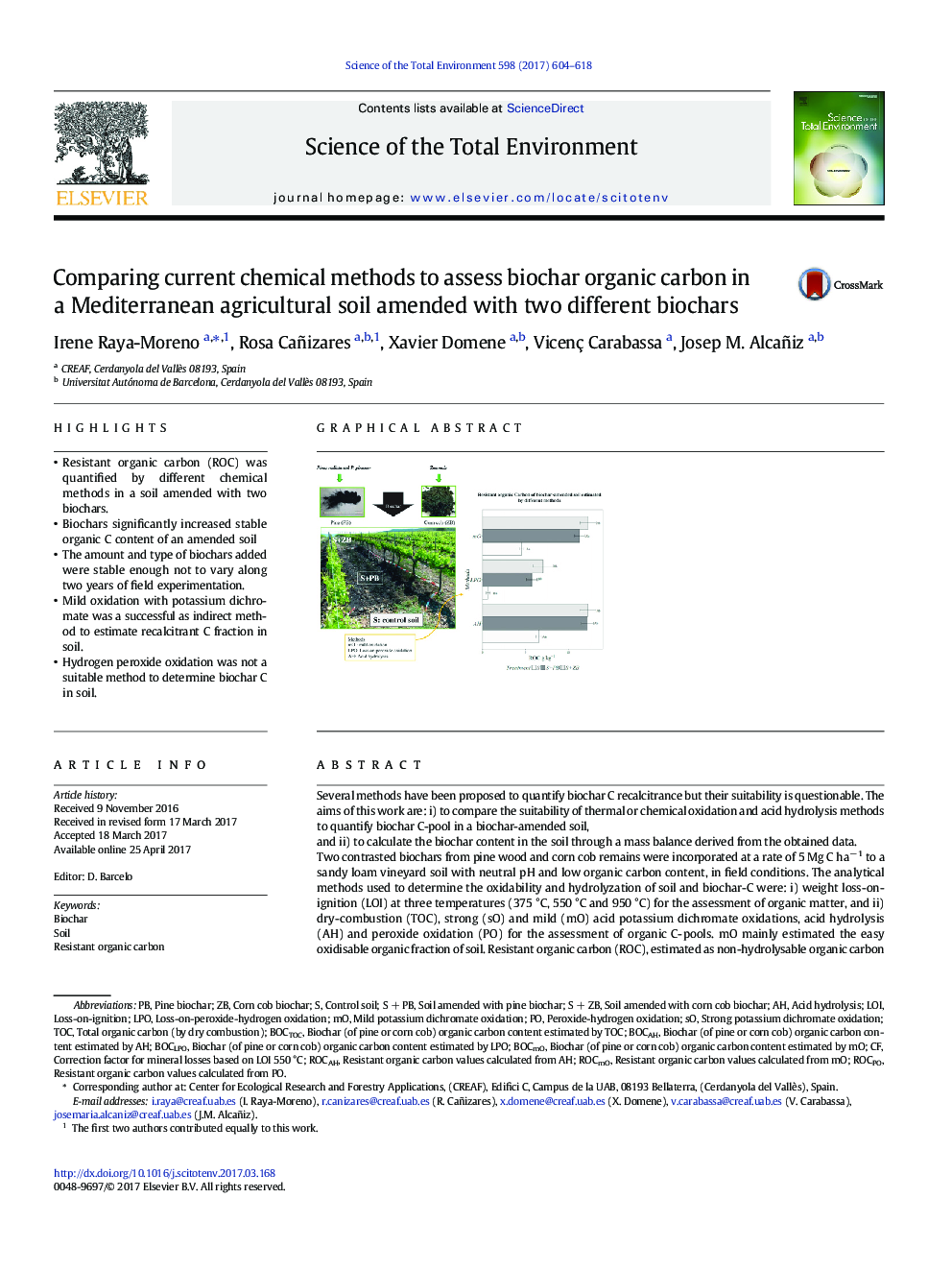| کد مقاله | کد نشریه | سال انتشار | مقاله انگلیسی | نسخه تمام متن |
|---|---|---|---|---|
| 5750973 | 1619699 | 2017 | 15 صفحه PDF | دانلود رایگان |
- Resistant organic carbon (ROC) was quantified by different chemical methods in a soil amended with two biochars.
- Biochars significantly increased stable organic C content of an amended soil
- The amount and type of biochars added were stable enough not to vary along two years of field experimentation.
- Mild oxidation with potassium dichromate was a successful as indirect method to estimate recalcitrant C fraction in soil.
- Hydrogen peroxide oxidation was not a suitable method to determine biochar C in soil.
Several methods have been proposed to quantify biochar C recalcitrance but their suitability is questionable. The aims of this work are: i) to compare the suitability of thermal or chemical oxidation and acid hydrolysis methods to quantify biochar C-pool in a biochar-amended soil,and ii) to calculate the biochar content in the soil through a mass balance derived from the obtained data.Two contrasted biochars from pine wood and corn cob remains were incorporated at a rate of 5 Mg C haâ 1 to a sandy loam vineyard soil with neutral pH and low organic carbon content, in field conditions. The analytical methods used to determine the oxidability and hydrolyzation of soil and biochar-C were: i) weight loss-on-ignition (LOI) at three temperatures (375 °C, 550 °C and 950 °C) for the assessment of organic matter, and ii) dry-combustion (TOC), strong (sO) and mild (mO) acid potassium dichromate oxidations, acid hydrolysis (AH) and peroxide oxidation (PO) for the assessment of organic C-pools. mO mainly estimated the easy oxidisable organic fraction of soil. Resistant organic carbon (ROC), estimated as non-hydrolysable organic carbon by AH and as non-oxidisable by mO, led to similar values in control soil (5 g C kgâ 1 soil), whereas different ROC values were obtained in soils amended with biochar (6-12 g C kgâ 1 soil). The suitability of these different methods as proxies to quantify biochar C was verified through a mass balance observing differences between them. PO removes well native soil organic matter, but also attacks partially biochar's fraction, so an underestimation exists. However, mO leaves intact biochar in the amended soil. Summarising, LOI, TOC and mO were the best proxies for biochar-C quantification, especially the last one, somewhat clarifying the debate on this topic.
275
Journal: Science of The Total Environment - Volume 598, 15 November 2017, Pages 604-618
